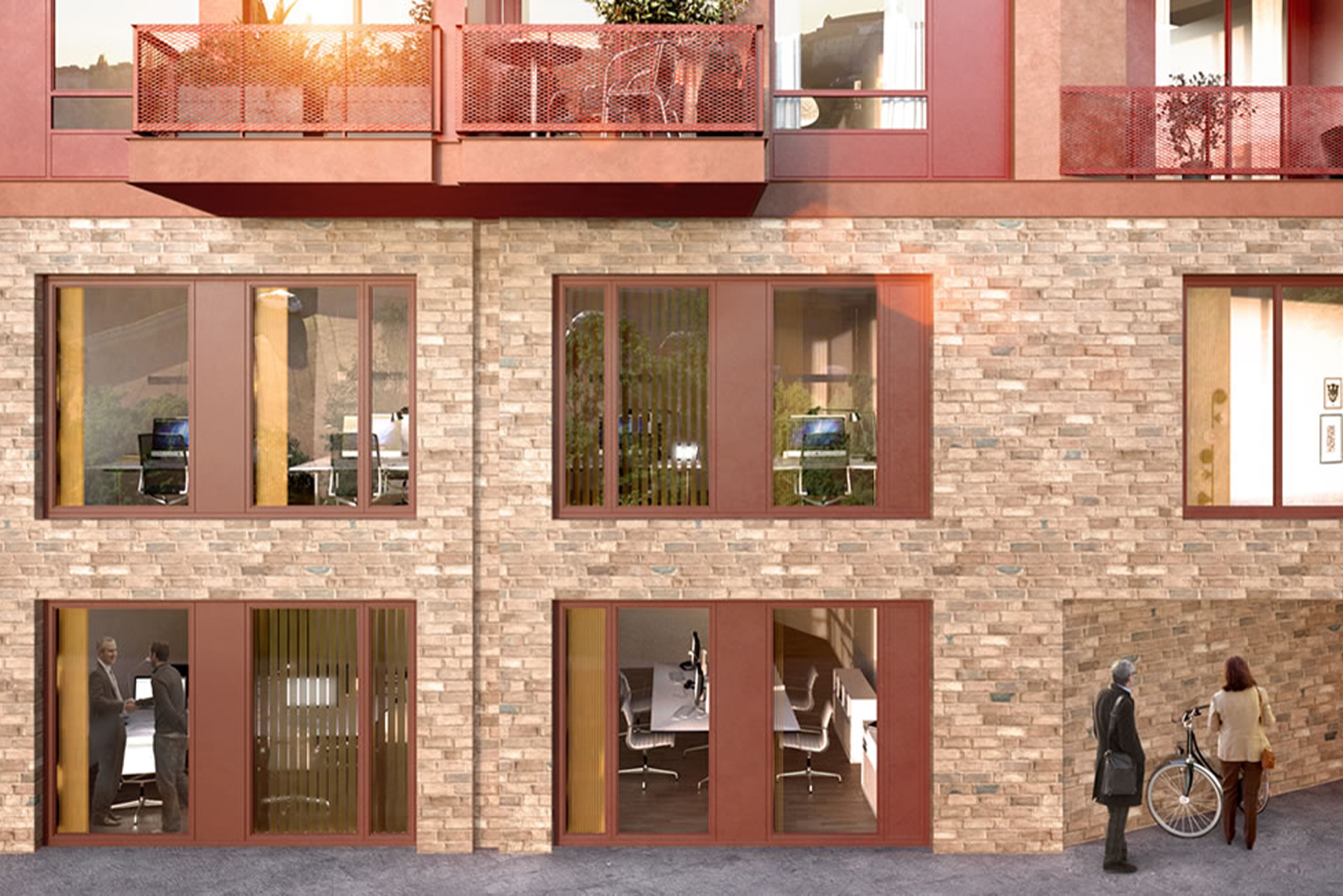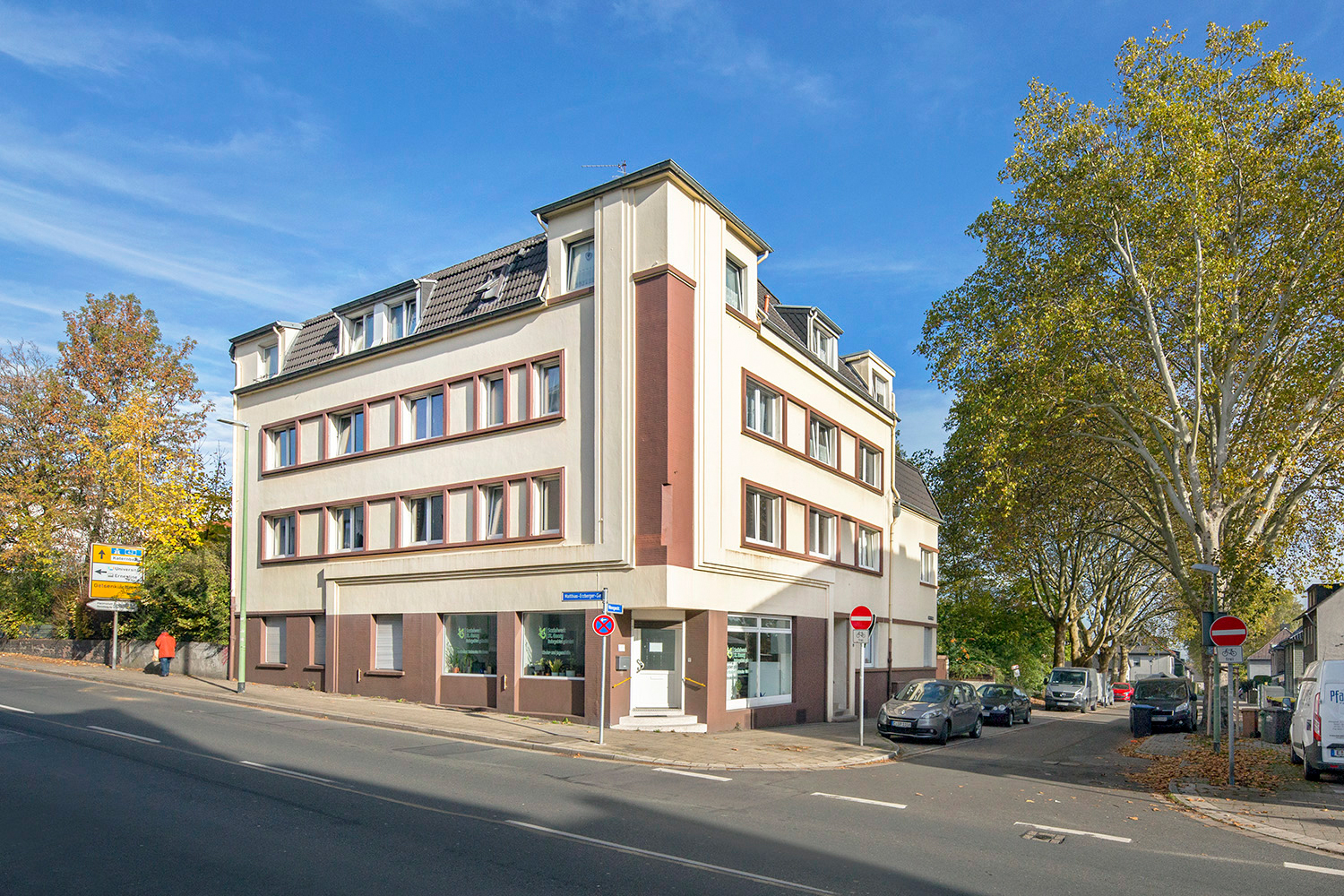Residential Investments in Germany – including Berlin Residential Investment Market – April 2020
29. Apr 2020

29. Apr 2020

Dear Readers,
Understandably, everybody is talking about coronavirus – and no one knows for sure how the situation will develop or what the status quo will look like after the current crisis. Some people are even rejoicing, hailing the “long-awaited end of the real estate bubble”. But just between us: Do you really think people will want and need less housing in the future? Or that urbanisation, which has been a societal driving force for the last 5,000 years and could easily be described as the greatest achievement of human coexistence, is set to come to an end? Nevertheless, the coronavirus crisis is certainly having an impact on a number of real estate submarkets, although the impact has not been uniform. Of course, the residential sector is among those facing challenges, although housing will continue to be the most consistent and reliable of all asset classes and real estate investments: long-term, plannable and a basic requirement at all times. We explain why this is the case in our new newsletter, alongside a great selection of articles on a range of other interesting topics.
We hope you enjoy our latest newsletter – and stay healthy!
Jürgen Michael Schick and Dr. Josef Girshovich

Jens R. Rautenberg | Managing Director of CONVERSIO Gruppe
The mood in the German real estate sector has noticeably deteriorated of late. Some market participants are already comparing the shock caused by coronavirus with that of the global financial crisis of 2007/2008. However, there are also a number of far more optimistic voices predicting a steep plunge into recession (with predictably negative consequences for the real estate industry) followed by a rapid recovery as soon as economic stimulus measures and support programmes kick in. bulwiengesa, for example, expects a potential economic boost as early as the second half of 2020, although it is not entirely clear when this will feed through to the real estate sector. In general, there is a great deal of uncertainty surrounding current forecasts. Nevertheless, there are some indications that at least the residential real estate market will emerge from the crisis relatively unscathed and may even be among the biggest winners of the crisis from next year onwards.
Fresh reinforcements for the residential property market
While developers and estate agents are among those suffering most from the sweeping restrictions put in place to limit the spread of Covid-19, there is little to fear for the residential property market as a whole. On the contrary, after a short-term price correction in 2020, it is entirely likely that prices will rise again over the next few years. Some institutional investors are already gearing up to take advantage of this price correction and the resulting improvement in price-to-rent ratios. As they become more active in the market, prices will stabilise. In addition, demand for housing from would-be homebuyers and tenants is not going to slacken anytime soon as there is still a shortage of hundreds of thousands of apartments nationwide and the industry is already struggling to secure enough building permits and deliver the required volume of completed dwellings.
And these long-standing fundamentals are now being exacerbated by a number of new developments that are likely to create their own unique, long-term dynamics in the residential property market. If we take interest rate developments out of the equation, it is clear we are in a historically unique situation.
On the one hand, many investors are dealing with a scarcity of investment alternatives in the wake of the trade disputes of 2019, the bond and equity market turbulence of 2020, the coronavirus crisis, and rising concerns over inflation. Whereas office and retail assets were, until very recently, considered suitable investment alternatives, their risks have now been ruthlessly exposed. Residential real estate, on the other hand, has come through most of these crises relatively unscathed, which means that residential real estate is likely to become an ever more central element of real estate investors’ investment strategies, especially when it comes to small investors and institutional investors with risk minimisation concerns.
On top of all this, a glut of capital is expected to flood the investment market over the next five years. According to JLL, around EUR 800 billion of (relatively) high-interest German government bonds are due to mature by 2025. This is ten times the volume of funds invested in the entire German real estate market each year, and almost 40 times more than was invested in the residential real estate market in 2019. The lack of risk-averse investment alternatives will lead to a significant portion of these funds flowing into the residential real estate market.
Market observers who think that prices on the German residential property market have already peaked and are now moving towards a long-term plateau will probably have to reassess their forecasts in the wake of the corona crisis.
If anything, the coronavirus crisis will reward those market participants who steer their companies and investments through the current predicament with a steady hand and take judicious advantage of emerging opportunities without sacrificing their risk management principles. After all, even though the German residential real estate market’s long-term prospects are good, the current market situation is creating investment risks that will need to be closely monitored for some time to come.

Thomas Meyer | CEO of WERTGRUND Immobilien AG
Whether e-commerce or the social media revolution – whenever profound, digitally-driven structural change has been involved, the real estate industry has generally responded with the same old mantra: “You can’t digitise bricks and mortar”. With the advent of blockchain technology and trade in cryptocurrencies and other token products, however, it is clear that this sentence simply no longer applies.
Same technology – different volatility
We have now reached the point at which all types of tangible assets – including every conceivable type of real estate asset – can be stored in the blockchain as “security tokens”. These assets can, therefore, include ownership of an underlying asset, a subordinated loan, or other securitised rights. Just like Bitcoin, the tokenisation of real estate offers an outstanding degree of security, transparency, accessibility and consistency. In addition, real estate tokens, again just like cryptocurrencies, can be infinitely fractionalised, thereby doing away with the traditional investment thresholds of real estate funds. This means that real estate investments are now a very real option for regular savings plans.
The major difference between real estate security tokens and cryptocurrencies, however, is that the performance of security tokens is primarily determined by the value of the property or underlying security they represent. This means that most digital real estate investments are likely to be significantly less volatile than Bitcoin and other cryptocurrencies.
The first real estate investment products based on tokens are already being developed, although a number of regulatory uncertainties remain. While the underlying real estate-related asset – for example a subordinated loan – is subject to the existing legal framework specific to that vehicle, the tokens (as digital representations of the asset) have not yet been subject to uniform regulation. One of the consequences of this legal discrepancy is that tokenised real estate products are not yet as freely tradable as cryptocurrencies. However, this will change in the foreseeable future, and the first steps have already been initiated by the German government.
Products for internet-savvy investors
In the longer term, conventional real estate investment products – such as mutual funds – will become increasingly tokenised. This will be governed by the established principle that, given enough time, anything that can be digitalised will be digitalised. Blockchain products could displace these investment structures as the market standard within the next decade, provided the regulatory framework is in place.
At present, however, the primary focus in the world of digital real estate investments is on making real estate products more attractive for younger, innovation-hungry investors. Such investors are generally already familiar with digitally supported products, such as Robo-Advisors, and are also an attractive target market for crypto-investments. From a technical point of view, it is also conceivable that real estate tokens could be directly exchanged with cryptocurrency tokens, thereby creating a digital investment experience. For investors with a close affinity for digital technology, these new investment products represent an opportunity to further diversify their portfolios – without, for example, having to waste time in an annoying queue at their local bank. Unfortunately, for subscribers to traditional real estate investment products, there is no alternative to joining the back of the line and biding their time.

Dr Michael Held | CEO of TERRAGON AG
Right now, Germany is largely at a standstill as a result of the coronavirus pandemic. At this time, our thoughts are naturally with the sick, their families and all those at risk of serious illness. Despite the seriousness of the current situation, we remain positive as we cast our minds forward to the post-lockdown return to normality. After all, there is no change in prevailing demographic trends: 2020 sees the first cohort of Germany’s baby boomers reach nominal retirement age. In other words, the post-war generation, characterised by its particularly strong birth rates, is on the verge of retirement.
We are at the dawn of a new era for the senior living sector. Demand for serviced apartments, a segment of the market commonly referred to as “assisted living” that provides a combination of essential housing services supplemented by additional personal care and health care services, has risen continuously in recent years and is set to accelerate over the next ten years.
How the economy as a whole and the submarket in particular will develop over the next few months and years remains to be seen. However, given cast-iron demographic developments, it is possible to make a range of forecasts whose validity, based on our current understanding, will remain unaffected by the Covid-19 pandemic. By 2030, the number of over 65-year-olds in Germany will increase by 28 per cent to 21.8 million, and the number of over 80-year-olds by as much as 38 per cent to 6.2 million. As a result, this asset class has an investment potential of EUR 64 billion within just 15 years.
Investors are also already aware of the sector’s massive potential. According to immoTISS care, the volume of transactions involving assisted living facilities for seniors may well exceed EUR 1.0 billion in 2020. Looking ahead to 2021, the forecast assumes that the volume of transactions in the assisted living segment will overtake care homes for the first time.
There is already a significant shortfall in provision for the new cohort of senior citizens, who, as a far more independent generation than pervious retirees, are striving to enjoy an active and self-determined retirement in their own homes. This assessment is confirmed by the 2020 Spring Report 2020 from the German Property Federation (ZIA), which for the first time devotes a separate chapter to the segment, thereby reflecting the enhanced status of assisted living for seniors. The report estimates that the demand in municipalities with more than 5,000 inhabitants currently totals 865,000 residential units – compared with an estimated supply of roughly 300,000 existing serviced apartments. This means that there is already a shortfall of more than half a million units. As a result, a vast number of senior citizens do not have access to assisted living facilities close to where they live that meet their specific financial needs. The striking conclusion of the empirica study: By 2035, the gap will widen by another 200,000 apartments.
The premium segment is among the winners
Demand varies both regionally and between individual market segments. From a medical and social perspective, the provision of care for 5.0 per cent of households over the age of 70 is deemed sufficient. Thus, for every 20 households in a city, one serviced apartment should to be available. Unfortunately, almost no German municipality has so far managed to meet this provision requirement. While provision in Hamburg (4.9 per cent) and Berlin (3.5 per cent) are close but still have a bit of work to do, there is a blatant undersupply in many other regions. In Rhineland-Palatinate, Thuringia and Saarland, the rate of provision is just 1.0 per cent. The lowest levels of provision are found in Germany’s eastern federal states, although the national average of 1.8 per cent shows that action urgently needs to be taken almost everywhere.
A comparison of the different equipment and service categories as represented by the Gesellschaft für immobilienwissenschaftliche Forschung (gif) star rating system reveals a disproportionate shortage of supply, with the most serious shortage in the premium segment. According to empirica data, Germany would currently need between 90,000 and 100,000 extra four- and five-star serviced living dwellings to meet current demand. This is, once again, the result of disappointing levels of provision, which vary regionally between 0.07 per cent in Saarland and eastern states to 0.64 percent in Hamburg. A rate of 0.75 per cent would meet current demand – but no German city has ever managed to get supplies up to this level. As the generation of baby boomers gradually retires, the supply shortage will become even more acute. By 2035, demand in the premium assisted living segment is set to rise by an additional 33,000 units. This is one of the reasons the ZIA Spring Report recommends a fundamental rethink of provision. The main challenge society faces over the next few years will be ensuring an adequate supply of housing as the number of Germans over the age of 65 increases.
Assisted living is an affordable option for many seniors
Thankfully, the sound financial footing of households with residents aged over 70 provides a solid basis for closing the significant supply gap. The relatively high number of affluent households, combined with the progressive differentiation of senior housing as an asset class, which has partly been driven by baby boomers’ higher expectations in terms of home comforts, flexibility and mobility, allows an average monthly rent of EUR 1,100 across the entire sector. And when it comes to four- and five-star apartments, which tend to have more generous floor plans, better equipment and more services, residents are currently paying an average of EUR 2,100 to EUR 2,800 per month.
This is the basis for the total investment potential of EUR 64 billion for the construction and maintenance of serviced apartments by 2035, which senior citizens would actually be able to finance from their income alone. If taxpayer funds were also used to improve care, this would enable EUR 100 billion of nationwide investment in the sector. And the general trend applies equally to the premium segment: empirica concludes that 2.4 million households could pay up to EUR 7,000 per month from their current income and existing assets. With their financial muscle, the retirement of Germany’s baby boomers in all probability means an extremely promising decade for the assisted living sector.

Jürgen Michael Schick | President of the German Real Estate Association IVD
It is far too early to predict the full extent of the corona-induced recession. Even with a gradual easing of the restrictions on various segments of the economy and sectors of public life, at this point in time it is only possible to provide rough estimates of the medium-term impact of the current crisis. Nevertheless, there are already a number of distinctly gloomy scenarios for the real estate market. Some experts are even forecasting a dramatic price slump or an across-the-board decline in demand.
I have a very different view of the future of the residential investment market. Many institutional investors, financial intermediaries and insurance companies will once again return to residential real estate as a safe haven. Family offices and wealthy private investors will now be highly reluctant to invest a large proportion of their liquidity in stocks, although there will certainly be opportunities to re-enter the stock market after a future market correction. Instead, they will again turn to rental housing investments. And investors who have so far primarily focused on commercial real estate will increasingly turn their attention back to the housing market. The residential investment market will prove to be a coronavirus winner. Incidentally, the same does not apply to the market for premium condominiums and owner-occupied homes. In both of these segments, it is highly likely that we will see a shift in the behaviour of many private buyers even after the end of the current phase of uncertainty.
Then there is the office boom of recent years, which is likely to be severely dampened for the time being. Record performances such as the one achieved in 2019, when one million square metres of office space was brokered in Berlin, will not be achieved again anytime soon. It is pretty much given that the knock-on effects of the pandemic will hit the office market far harder than the housing market. The subsequent recession will reduce the number of office workers and demand for office space will drop noticeably. During economic downturns, companies do not want to commit themselves to long rental contracts. Neither do they want to proceed with long-gestating expansion plans. Office rents will come under increasing pressure. Of course, even in a crisis, there are always a number of attractive projects that can be developed with a secure future. But on average across the entire market, the office sector is unlikely to get off lightly. The recession will leave the deepest traces in the retail sector (food and groceries excluded), the gastronomy sector and the hotel industry. Social distancing and quarantine orders will rattle the economic foundations of many commercial tenants. As a result, demand for space will fall – even after the current preventative measures are lifted. Of the tenants that do survive, some will have no option but to try to renegotiate their rents.
And yet, none of this applies to the rental housing market. Even after the coronavirus crisis, the residential market will still be subject to high demand in rapidly expanding cities and conurbations, and the supply of housing will remain stubbornly low. I estimate that 2020 rents will follow the patterns we observed in 2019 and gain around 3.0 per cent by the end of the year. The huge leap in rents over the past decade was already over anyway, as we had seen in all of Germany’s major cities. Given its stability, the rental housing market is the safe haven in uncertain times. This is good news for any property owners out there considering the sale of their property to generate extra liquidity. With no dip in demand, no one should be worried about coronavirus as a driver of price declines. Anyone looking to sell a rental property in the wake of the crisis, for example in order to invest in their own company, can expect an accommodating market environment.
In Berlin, however, this is only true in part. The German capital’s residential real estate market is indeed under pressure. Not because of coronavirus, but because of the left-wing governing coalition’s rent freeze and cap. The impact of the rent cap, which bears a striking resemblance to expropriation, seems far more severe than the impact of the current pandemic. The virus is a force majeure. The rent cap is the result of a misguided real estate policy that deliberately divides rather than encouraging people to work together. And if there’s anything we need right now to help us through the crisis, it is to work together.

In the midst of the coronavirus crisis, housing construction has ground to a halt. This is one of the key results of a new survey of members of the Federal Association of Free Real Estate and Housing Companies (BFW), who report that large numbers of construction sites have come to a complete standstill because of a lack of official permits, a shortage of foreign workers and interruptions to the supply of building materials. According to BFW’s members, problems in just one of these three areas is enough to stop the entire construction process. According to the survey, 76 per cent of surveyed companies are experiencing or expecting construction delays. Most companies expect delays of about two to three months. What’s more, 40 per cent of the companies reported that they would not even be able to start planned construction works because so many municipalities are currently not processing building permit applications.
However, a recent study from bulwiengesa has confirmed that construction activity in Germany’s seven largest cities had already started to slow down even before the latest developments. According to a study, fewer apartments were planned or built last year in all cities except Berlin. The market data was collected by bulwiengesa’s analysts before the Covid-19 pandemic, so any impact of the virus is not reflected in the figures. The data indicates that construction would have declined even without the current threats to public health. Many property developers are increasingly focused on building offices rather than apartments. Furthermore, there remains a serious shortage of affordable land for housing construction.

Are residential and commercial tenants still paying their rents on time during the coronavirus pandemic? It is a question that is certainly causing escalating anxiety among landlords. The latest indications from Hamburg should therefore provide a welcome measure of relief. The Hamburg Alliance for Housing has conducted a survey of its members and found that, in the residential sector, 2,490 cases of late payments have been reported, equivalent to less than 1.0 per cent of all registered apartments. On average, the rent arrears per apartment averaged EUR 704.00.
By comparison, 17 per cent of rents for commercial properties, including offices and logistics space, have not been paid. The rent arrears per commercial unit averaged EUR 3,032. Retail, restaurants, cafes and hotels are particularly hard hit by the standstill. In some cases, landlords have lost up to 80 per cent of their regular rental income. The survey was conducted online and ran until 14.04.2020. As a result, most rental payments for the month of April are reflected in the survey. In total, 888 Hamburg companies and private landlords provided data relating to 357,572 residential and 11,072 commercial leases.

According to the Cologne Institute for Economic Research (IW), the housing market should come through the coronavirus crisis relatively unscathed. According to a new IW study, residential property prices will probably not fall at all or, if they do, the declines will be moderate. In the worst-case scenario, prices could fall by up to 12 per cent. The damage to the property market depends on how many weeks the economy as a whole remains at a standstill, as it is the lockdown that most endangers people’s incomes. The study’s authors have calculated three scenarios. Were rental income to fall to the extent last seen during the global financial crisis of 2008/2009, property prices would collapse by around 17 per cent this year in the worst case. However, the authors dismiss this as a likely outcome because a decline of this magnitude would also require significantly higher interest rates. However, given the strong assumption that long-term interest rates are likely to fall even further, prices are more likely to stagnate or fall slightly. A significant price slump could occur, but only if the coronavirus crisis causes the collapse of the real estate market as a whole. However, as the authors point out, there is no real estate price bubble in Germany. Instead, there is a structural shortage of housing and the costs for tenants and owner-occupiers remain closely linked. According to the IW study, there is another major factor underpinning the stability of property purchase prices – rental prices, which show no signs of falling any time soon.

These four separate units each accommodate usable office spaces of between 73 and 253 square metres. The units are forecast to be rented out at an average of EUR 23.50/sqm/month. The units are well-situated, especially in terms of public transport links and vehicular access. The units are also equipped with ten underground parking spaces, priced at EUR 150.00 per month.
Price: EUR 3,750, 000, plus 7.14% sales commission (incl. sales tax)
Forecast net annual rent: EUR 185,000
Price-to-rent ratio: 20.28
Information acc. to energy performance certificate: projected energy consumption 68 kWh/(m²*a), energy-efficiency class B, gas central heating, built in 2016 (planning option).
(Please quote property reference number 52178 when making your enquiry)

This multi-family apartment building was extensively upgraded to KfW-70 standard in 2010. The property’s facades were repainted and all windows and doors were replaced. The 33 residential units belong to a single HOA. The units have floor plans ranging from 46 to 114 square metres and are accessed via an elevator. Each unit is equipped with a balcony overlooking the quiet courtyard.
Price: EUR 4,500,000, plus 7.14% sales commission (incl. sales tax)
Lettable floor space: 1,773 sqm
Price per sqm: EUR 2,538
Information acc. to energy performance certificate: energy consumption 82 kWh/(m²*a), energy-efficiency class C, district heating and hot water system, built in 1970.
(Please quote property reference number 52109 when making your enquiry)

This free-standing multi-family apartment building is located in a quiet area with outstanding public transport links relatively close to the Zollverein UNESCO World Heritage site. The property accommodates ten apartments and one commercial unit and the average rent is EUR 5.20/sqm/month. The apartments have floor plans from 49 to 83 square metres. The commercial space is rented for EUR 5.49/sqm/month and, like the apartments, offers plenty of potential for rent adjustments.
Price: EUR 760,000, plus 3.57% sales commission (incl. sales tax)
Actual net annual rent: EUR 48,708
Price-to-rent ratio: 15.60
Information acc. to energy performance certificate: energy consumption 256.8 kWh/(m²*a), energy-efficiency class H, gas central heating, built in 1929.
(Please quote property reference number 52203 when making your enquiry)